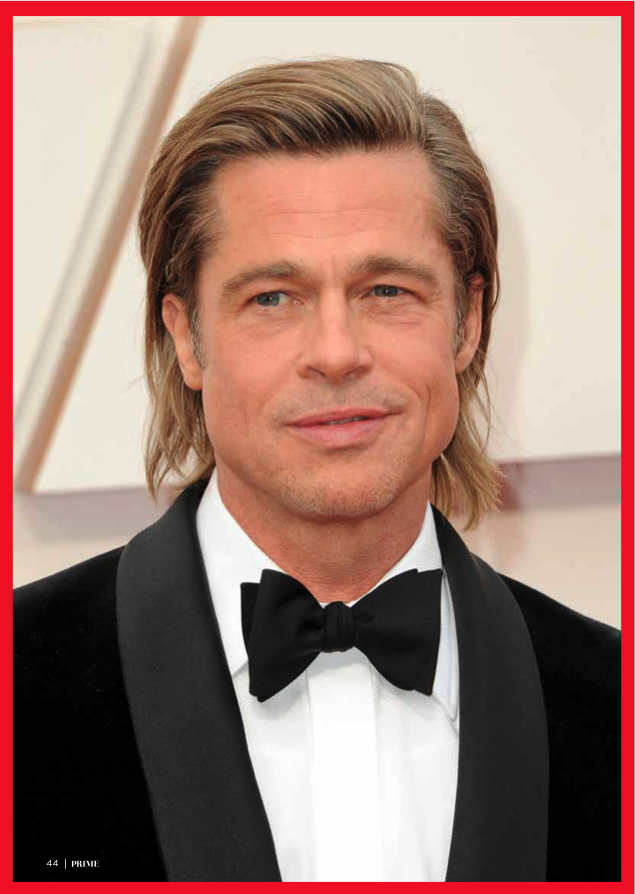
The year was 1991. Women in cinemas across the world collectively held their breath as the handsome hitchhiker dressed in a cowboy hat, a white t-shirt and an unbuttoned blue denim shirt appeared in the sideview mirror of the open-top convertible. Knocking on the car’s door; the young man asked in a deep Southern drawl, “Excuse me ma’am. Uh, may I ask which direction you’re heading? You see I’m trying to get back to school, my ride fell through and well, I’m kinda stuck here…” And that is when the camera catches the face of the dreamboat, and a new cinematic god was born. The movie was Thelma and Louise, and the handsome young man was Brad Pitt.
Thelma and Louise made the world fall in love with Pitt there and then, and this love has remained strong even as the young heartthrob has matured into one of the best actors in Hollywood. As he prepares to celebrate his 60th birthday this December, we take a retrospective look at the career and life of Brad Pitt – Hollywood’s uber-hunk and one of the best Hollywood leading men to ever grace the silver screen.
EARLY LIFE
Interestingly, Brad was not Pitt’s first name. He was born William Bradley Pitt on 18 December 1963 in Shawnee, Oklahoma, to William Alvin Pitt, owner of a trucking company, and Jane Etta, a school counselor: The eldest of three children (his younger siblings are Douglas and Julie), Pitt was raised in a devoted, close-knit Southern Baptist family in Springfield, Missouri after his family moved there while he was still very young. Brought up as a strict Baptist, Pitt sung in the church choir and it was there that he started to get interested in acting.
Pitt attended Kickapoo High School and was particularly good at sports. He was a member of the golf, swimming and tennis teams. However, despite his sporting excellence, the theatre club at Kickapoo took priority for the young Pitt. Being a good-looking boy, he easily snagged all the leading roles. And with his good singing skills honed from time spent in the church choir, Pitt excelled in a number of school musicals.
Following his graduation from high school, Pitt enrolled in the University of Missouri in 1982, where he majored in journalism with a focus on advertising. While Pitt was a goody-two-shoes in his high school days, he would discover his wild side in university and started turning his back on religion as a new world unfolded for him. He recalled, “I grew up very religious, and I don’t have a great relationship with religion. I oscillate between agnosticism and atheism.” At university, Pitt’s good looks and charisma got him noticed, and he joined the Sigma Chi International Fraternity where he occasionally acted in fraternity shows.
As graduation approached, Pitt began to feel restless about his future. He loved films, but as Missouri is not exactly a hotbed for filmmaking, he felt that a future in film would not be best served by staying in Missouri. Hence, two weeks before completing the coursework for his degree, Pitt made a life-changing move: he decided to take up acting in Los Angeles – the home of Hollywood. He then left the university and moved to Los Angeles with only $325 to his name.
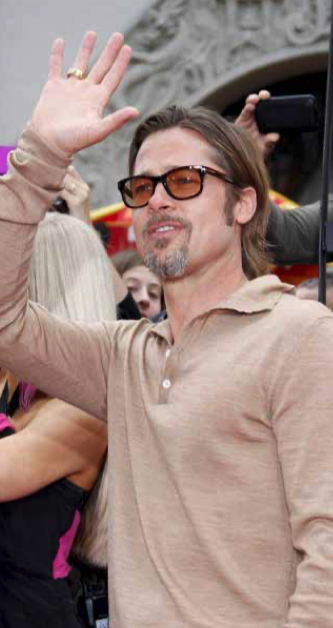
DIFFICULT EARLY YEARS
Despite his good looks, it was not smooth sailing for Pitt when he first landed in Tinseltown. He had to live out of his car for a while and worked odd jobs to survive, while taking acting classes. Pitt was lucky enough to land his first acting job in an industrial-training film within a week of coming to LA, but his other jobs were not so glamourous. They included handing out cigarette samples, wearing a chicken costume to draw customers into an El Pollo Loco fast-food restaurant, delivering refrigerators, and working as a personal chauffeur for the stripper group Women of the Pole where he fetched strippers to bachelor parties. Pitt remembered, “I’d pick them up, and at the gig I’d collect the money, play the bad Prince tapes and catch the girls’ clothes. It was not a wholesome atmosphere, and it got very depressing.
Despite the depressing nature of his work, the job of transporting strippers did have its upside. It helped to introduce Pitt to Roy London – the well-respected acting coach to stars like Michelle Pfeiffer and Sharon Stone. Pitt remembered the episode vividly, “After two months I went in to quit, and the guy said, ‘Listen, I’ve got this one last gig tonight. So, I did it, and this girl – I’d never met her before- was in an acting class taught by a man named Roy London. I went and checked it out, and it really set me on the path to where I am now. Strippers changed my life.”
London became Pitt’s teacher and mentor, and he remembers him fondly: “He was tough, lovely, compassionate. I give him full credit for pointing me in this direction (Uta Hagen method •an acting technique which avoids overintellectualising acting and rooting the process in rigorous observation of daily life. I studied with him for three years, I think, then started getting some work. Besides London, Pitt also received a great deal of help from country singer Melissa Etheridge in the early days of his career. At the time, Etheridge was one of the few who truly believed in the aspiring actor’s talent and felt that he could go all the way to the top. She took Pitt in and allowed him to sleep on her sofa so that he did not have to spend money on rental.
Under London’s tutelage, things began to slowly improve. In 1987, Pitt snagged several bit parts on TV. He made his TV debut with a two-episode role in the NBC soap opera Another World and he also had a four-episode supporting stint in Dallas. Besides his TV work, Pitt also landed some uncredited cameos in the films No Way Out, No Man’s Land and Less than Zero (all 1987).
Over the next few years, Pitt continued to toil in a number of supporting roles and guest appearances in both movies and TV. He did land his first leading role in the former Yugoslav- US co production The Dark Side of the Sun (1988) where he played a young American taken by his family to the Adriatic to find a remedy for a skin condition. However; the movie’s release was shelved due to lost footage. The footage was later recovered and the film was released in 1997. One of Pitt’s more notable credits during this difficult period was his starring role in the TV movie Too Young to Die? where he played a drug addict who takes advantage of a young runaway played by Juliette Lewis. Pitt and Lewis started dating while shooting this film. Lewis was 16 while Pitt was 26 at the time. The couple stayed together for four years before they split in 1993. During their time together, they also co-starred in the serial killer flick Kalifornia (1993).
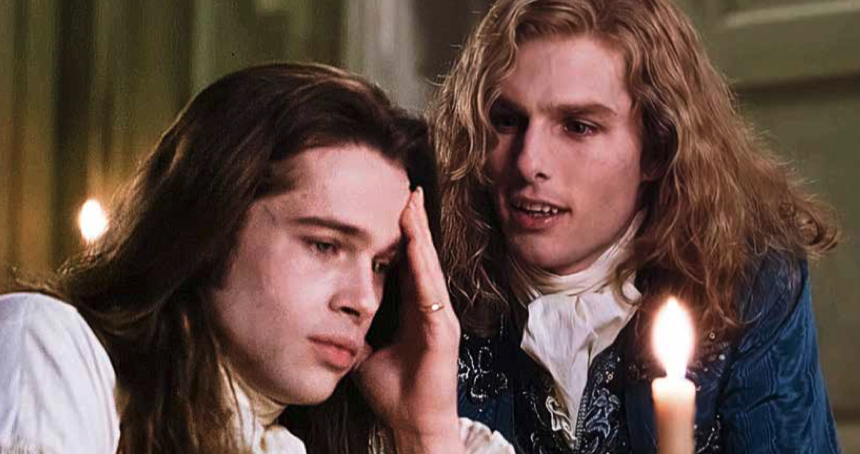
THELMA AND LOUISE
If the proverbial 15 minutes of fame have rung true for many starlets in Hollywood, Pitt has made his 15 minutes work and stretched it out into decades of success. When he first exploded into public consciousness with his 14-minute role in Ridley Scott’s seminal 1991 female empowerment road movie Thelma and Louise, he not only mesmerised the world with his good looks and his lean, sculpted body; he practically redefined male sexuality and attractiveness.
Thirty years on from its theatrical release, Thelma and Louise is still seen as one of the greatest feminist movies of all time. The movie drove a debate on feminism and masculinity, and Pitt’s portrayal of the drifter/robber J.D. contributed much to the debate. Channeling his experience as a jeans model, Pitt scorched the screen with a sexy and charming performance. In one of the movie’s most memorable scenes, a topless Pitt showed off his lean, sculpted fashion model body as he first revealed to Geena Davis’s Thelma his true work, demonstrated his gentlemanly repertoire for robbing a store, proceeded to charm the pants off her (literally), and then still robbed her anyway.
Before Pitt, the typical on-screen definition of masculinity had been defined by the likes of Sylvester Stallone and Arnold Schwarzenegger: violent, insensitive, unemotional and asexual muscle-men who are more likely to hug a gun than hold a woman. Pitt completely turned this cinematic stereotype on its head. His J.D. is a sensitive man who listened attentively to women, and is gentle and interested in them, even as his good looks and sculpted body made him an obiect of desire. These qualities are in stark contrast to most of the other men in the movie; many of whom are toxic and controlling men who either saw women as nothing more than objects of lust or think women are completely beneath them.
Yet, Pitt’s stellar turn in Thelma and Louise did him no real favours in terms of his career: Even as people began to recognise him as a sex symbol, he spent the next couple of years floundering around in little-seen movies, including the low budget musical drama comedy Johnny Suede (1991) and the disastrous live action-animation mashup Cool World (1992). On a more positive note, Pitt did star in the old school Robert Redford directed drama A River Runs Through It (1992), with several critics noting his good performance. Washington Post’s Desson Howe commended that Pitt brought “authentic presence to the movie” and that he was an “engagingly flawed naif”.
Besides A River Runs Through It, Pitt also starred alongside his then girlfriend Juliette Lewis in the serial killer flick Kalifornia (1993), where they played a white trash couple who answers an advertisement put up by an ambitious yuppie couple (played by David Duchovny and Michelle Forbes) for travel companions on a cross country tour of famous mass murder sites. Unbeknownst to them, the character played by Pitt is an actual serial killer:
If fans were expecting Pitt to showcase his usual platinum- blonde good looks, they would be hugely shocked. With a head of greasy hair, unshaven face, careless tattoos and unkempt clothes, Pitt looked a million miles away from his usual self. While the movie was not universally well- received, Pitt’s committed performance earned him plenty of praise. Roger Ebert called Pitt’s performance one of the “most harrowing and convincing” he had ever seen, while Washington Post’s Richard Harington also commended that Pitt “manages to overcome his own good looks to invest his scruffy character with a feral frenzy.”
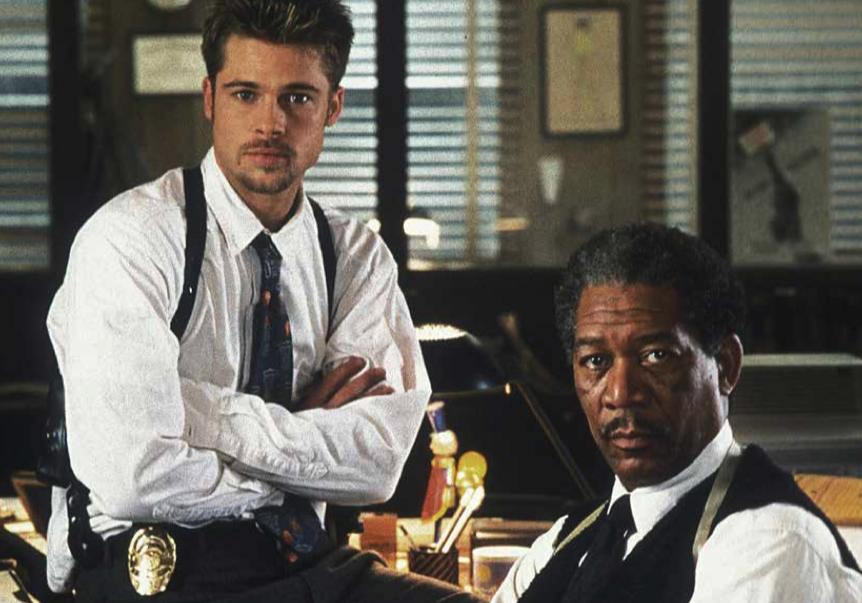
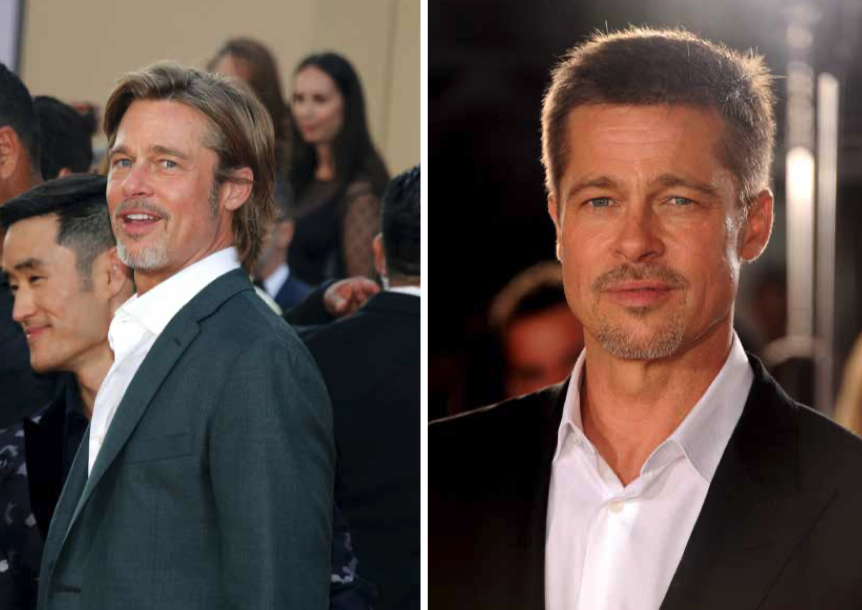
THE BREAKTHROUGH
1994 would mark the year when Pitt finally broke through to become a major star in Hollywood. His casting as the lead character Louis de Pointe du Lac in the movie adaptation of Anne Rice’s famous novel Interview with the Vampire: The Vampire Chronicles elevated him into the Hollywood A-list as the film became a major hit and grossed over US$223 million worldwide. However; despite the movie’s success, the filmshoot was a major ordeal for Pitt.
For starters, Pitt never got along with his co-star Tom Cruise (Prime Jun-Jul 2021 cover) – to the point where the pair of superstars never worked with each other again. Several factors led to the infamous feud. While Pitt’s character Louis was supposed to be the main character in the movie, it was Cruise who got top billing so much so that his face was the only one featured on the movie poster: Furthermore, it was alleged that the movie was rewritten to emphasise Lestat de Lioncourt (Cruise’s character) over Louis, the main character in the original novel. As the bigger star; Cruise was also paid substantially more than Pitt, who did not have a hit to his name at that point.
The duo’s contrasting personalities were another major bugbear for Pitt. Pitt had remarked, “He bugged me. There came a point during filming when I started really resenting him. You gotta understand, Tom and I are… we walk in different directions. He’s North Pole. I’m South. He’s coming at you with a handshake, where I may bump into you, I may not, you know?” Besides the on-set tension between the two lead actors, the filming experience also broke Pitt to the point where he asked to quit the movie. As he recalled, “I am miserable. Six months in the f***ing dark..We get to London, and London was f***ing dark. London was dead of winter: We’re shooting in Pinewood, which is an old institution.. There’s no windows in there. It hasn’t been refabbed in decades. You leave for work in the dark – you go into this cauldron, this mausoleum – and then you come out and it’s dark. I’m telling you, one day it broke me. However; when Pitt approached producer David Geffen, telling him: “David, I can’t do this anymore. I can’t do it. How much will it take to get me out?’ Geffen, very calmly, told him: “US$40 million.” Pitt stayed and roughed it out.
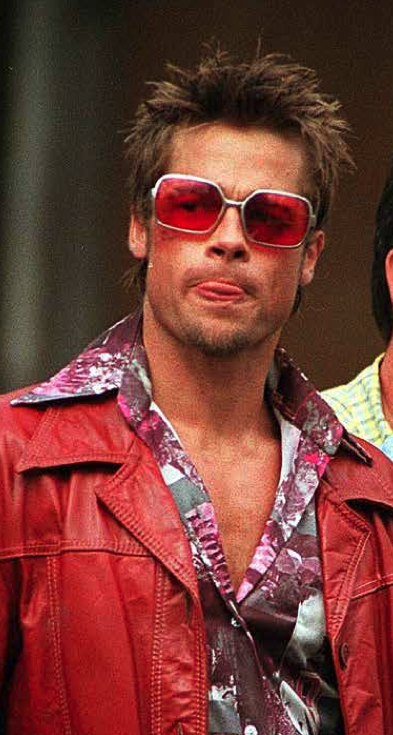
If Interview with the Vampire was a taxing experience for Pitt, his other 1994 blockbuster Legends of the Fall would be an altogether much more pleasant experience. Edward Zwick’s old-fashioned epic stars Pitt as the middle of three sons living with their father (played by Sir Anthony Hopkins) in the wilderness of Montana during the early twentieth century. The family would find itself torn apart by the events of World War I as well as the older and middle sons’ intense love affairs with the youngest son’s fiancé (played by Julia Ormond) after their youngest brother is killed in the war:
Unlike Interview with the Vampire, Legends of the Fall was a showcase for Pitt. As Reelviews James Berardinelli remarked, “Brad Pitt, a modern-day James Dean, brings a wealth of melancholy to his role of Tristan, the fulcrum for at least three of the film’s major tragedies. The character’s comings and goings represent the openings and closings of chapters. Even when Tristan isn’t on screen, the movie is invariably about him. It takes little guessing to realise that his love affair with Susannah (the fiancé) is central to everything that transpires.” San Francisco Chronicle’s Peter Stack similarly deadpanned that Legends of the Fall “delivers plenty that is big-screen handsome – Brad Pitt with wild hair, Brad Pitt with wild horses and Brad Pitt in the wild outdoors.” And Brad Pitt proved to be box office gold as well – all US$160 million of it. He even received his first ever Golden Globe nomination for Best Actor (Drama) for his performance.
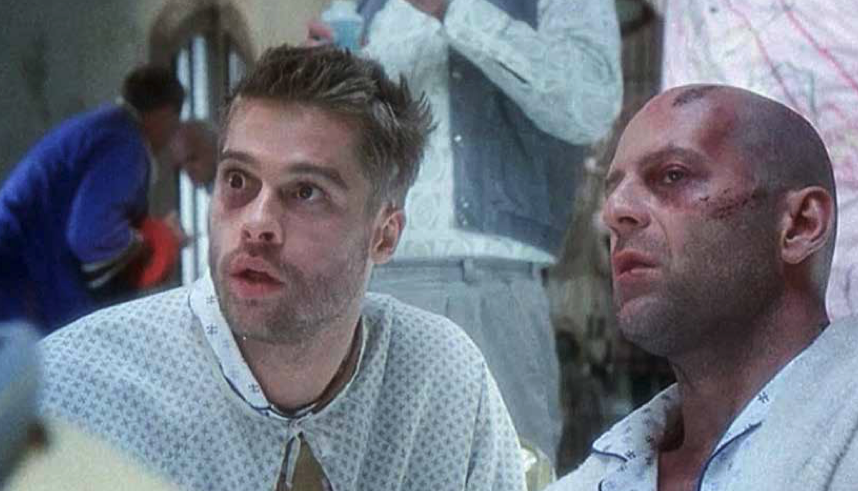
THE EDGY SUPERSTAR
Rather than capitalise on his good looks following these successes, Pitt took on a number of risky projects. His first movie following a successful 1994 was the dark thriller Seen (1995) which Pitt admitted he took on “to escape the cheese” of Legends ofthe Fall. Co-incidentally, the movie’s two leads, Pitt and Morgan Freeman, were not the first-choice picks for their roles. The producers had originally targeted Denzel Washington (Prime Aug-Sep 2023 cover story) and Al Pacino as the leads. However; Pacino declined as he was already scheduled to film City Hall (1996), while Washington turned down the offer as he deemed the film to be “too dark and evil”. Both have since expressed regret in not taking up their offers.
Seen is one of Pitt’s most iconic films and one of his biggest box office hits, taking in over US$370 million worldwide. The movie was very well-received by critics, with Roger Ebert even including it as part of his prestigious Great Movies collection of reviews. Indeed, Pitt has admitted that he considers Seen to be one of the most perfect films he has ever made. Interestingly, in order to escape his burgeoning sex symbol reputation, Pitt did not want to take off his shirt in the film; however; he still ended up winning the MTV Movie Award for Most Desirable Male for his role anyway.
Punch Mickey, whose speech is so incomprehensible that most of the other characters in the movie do not understand what he is saying. Pitt had been a big fan of Ritchie’s previous film Lock, Stock and Two Smoking Barrels (1998) and he approached the British director to ask for a role in Snatch. However; due to Pitt’s inability to master a London accent, Ritchie gave Pitt the role of Mickey the Gypsy Boxer instead. Although Pitt had actually not wanted to play another fighter again after having just finished shooting Fight Club, he took on the role anyway because he wanted to work with Ritchie very badly.
THE BLOCKBUSTER PERIOD
Even as he became famous, Pitt never fully embraced his new-found status as a movie superstar in the 1990s. This was evidenced by him taking on a number of projects that were not always clear-cut hits. The 2000s would see him take a different approach. During this period, he began to slip more comfortably into the skin of a movie idol, and took on a number of leading roles in mainstream blockbuster hits.
In 2001 alone, Pitt had three Hollywood blockbusters. The first to be released was the adventure comedy The Mexican where Pitt paired with fellow mega-star Julia Roberts for the first time. Although the couple spent most of their time apart in the movie (which was a major complaint for fans), they were both praised for their fine performances and the movie was a US$140 million hit.
Pitt’s next release in 2001 was the spy thriller Spy Game, where he starred alongside the evergreen Robert Redford, who had directed him in A River Runs Through It. An entertaining, first rate thriller; Spy Game was another US$140 million hit for Pitt.
Pitt’s final film in 2001 was also his most successful: the star- studded crime caper Ocean’s Eleven, which produced two sequels and inspired a 2018 spin-off, Ocean’s Eight. The film is a remake of Frank Sinatra’s 1960 original and featured a who’s-who of Hollywood’s A-listers, including star director Steven Soderbergh; fellow A-list actors George Clooney, Julia Roberts and Matt Damon; and a heavyweight supporting cast that included Bernie Mac, Andy Garcia, Don Cheadle, Elliot Gould, Casey Affleck and Scott Caan. In fact, the entire cast was so expensive to assemble that they worked for less than their usual salaries to bring down the budget. It was probably worth it. Ocean’s Eleven grossed over US450 million worldwide, and became Pitt’s biggest hit at the time.
With three blockbusters under his belt in 2001, Pitt then stayed relatively low key for a couple of years. He supported his friends by taking on minor roles in Soderbergh’s low budget Full Frontal and Clooney’s directorial debut Confessions of a Dangerous Mind (both 2002). He also did voice work for the animated feature Sinbad: Legend of the Seven Seas (2003).
Pitt then made a big return to the blockbuster arena in 2004 with two major tentpole pictures: Troy and Ocean’s Twelve. The former is based on Homer’s epic poem The Iliad. In this movie adaptation, Pitt plays Achilles, said to be the greatest warrior of all time. With his bronzed skin and bulging muscles, Pitt looked pretty much like an actual Greek God. Indeed, he had trained for six months to get his body to resemble that of a Greek statue. Pitt’s hard work paid off handsomely as Troy easily overtook Ocean’s Eleven to become his biggest hit at the time, taking in almost US$500 million worldwide. Ocean’s Twelve, which continued the high jinks of the original Ocean’s Eleven crew with the addition of Catherine Zeta-Jones and French star Vincent Cassel, did not disappoint either The film was well-received by both critics and cinema-goers, taking in over US$360 million globally.
The following year (2005), Pitt starred in the US$480 million mega-hit Mr. & Mrs. Smith, a film that would prove pivotal in Pitt’s private life. The romantic action adventure paired Pitt with the sexy Angelina Jolie, and their unmistakable smouldering chemistry burnt up the screen. The hot Hollywood couple became known as “Brangelina” and they were constant fodder for Hollywood gossip as Pitt was married to Friends’ star Jennifer Aniston at the time. Pitt eventually split from Aniston a few months later and hooked up with Jolie, whom he would have a relationship with for about 15 years.
2007 would see Pitt add another Golden Globe nomination for Best Supporting Actor to his name. In the highly acclaimed ensemble piece Babel (2006), directed by feted Mexican auteur Alejandro G. Iñárritu, Pitt and Cate Blanchett portray an estranged American couple on holiday in Morocco. During a bus trip, the wife is struck by a stray bullet, and teeters on the brink of life and death. Pitt’s remarkable performance as the desperate husband, who goes from indifference and sadness to fear and franticness, earned him a well-deserved Golden Globe nomination.
During this period, Pitt also stepped into the shoes of a producer for the first time. His first producer credit in a major Hollywood film came in The Departed (2006), Martin Scorsese’s much praised Hollywood remake of the Hong Kong cops-and-robbers classic Infernal Affairs (2002). 8 Interestingly, Pitt was originally cast in Matt Damon’s role as the crooked cop, but he dropped out to work with Inárritu in Babel, even though he did stay on as a producer.
The following year (2007) saw Pitt’s final involvement in the Ocean’s series as he reprised his role as Rusty Ryan in Ocean’s Thirteen, alongside the original Ocean’s Eleven cast and Vincent Cassel, with Al Pacino newly added as the villain. The final installment of the Ocean’s series did its usual box office business as it took in over US310 million in global box office takings.
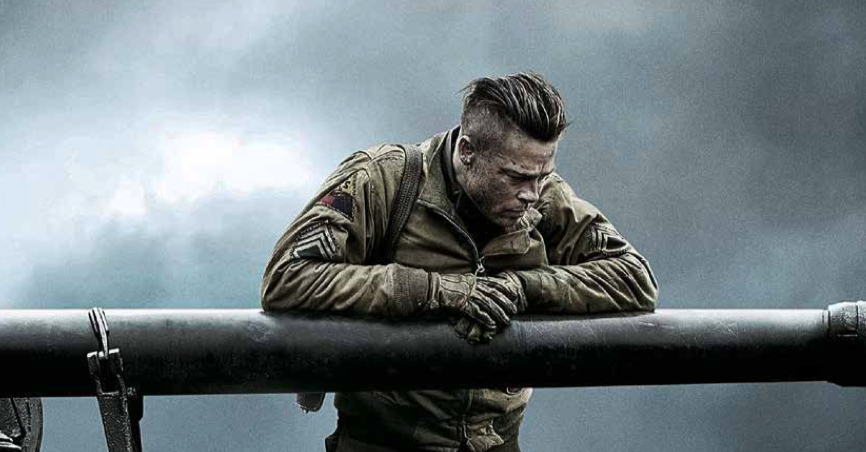
WORKING WITH THE AUTEURS
As he approached the latter half of the 2000s, Pitt would begin to seek new collaborations with noted directors, while putting priority on starring in projects he is producing. The Assassination of Jesse James by the Coward Robert Ford (2007) is a case in point of the latter: As producer for the movie, he brought in the excellent Australian director Andrew Dominik, who had experience helming similar biographical crime stories. As the lead, Pitt produced a strong performance that was praised as “excellent” by Reelviews’ Berardinelli. Indeed, Pitt has such affinity for the movie that he has named it his personal favourite of all the movies he has acted in.
In terms of collaborations with noted directors, Pitt sought and worked with the likes of the Coen brothers in the screwball comedy Burn After Reading (2008), and Quentin Tarantino in the cult classic war adventure Inglorious Basterds (2009). He also teamed up for the third time with David Fincher for the fantasy The Curious Case of Benjamin Button (2008), based on a 1922 short story written by acclaimed novelist E. Scott Fitzgerald. Pitt’s involvement ensured that all three movies were major hits. Burn After Reading earned over US$160 million worldwide, while both Inglorious Basterds and Benjamin Button took in over US$300 million globally. Pitt’s performances in Burn After Reading and Inglourious Basterds were widely praised, while his excellent portrayal of a man who ages in reverse in Benjamin Button earned him a nomination for Best Actor at both the Oscars and the Golden Globes.
PLAN B ENTERTAINMENT
As the 2010s dawned, Pitt began to increasingly lend his box office clout to his own productions under Plan B Entertainment – his production company. He produced and starred in the highly acclaimed The Tree of Life (2011), directed by the great Terrence Malick; but it was arguably his other 2011 production – Moneyball – that proved to be a massive gamechanger: Even though big names like Pitt, Sean Penn and Jessica Chastain were attached to The Tree of Life, the film was not a box office hit due to the artsy nature of Malick’s work. On the other hand, Moneyball married critical acclaim with box office results. Moneyball is based on the non-fiction book Moneyball: The Art of Winning an Unfair Game, which talks about the Oakland Athletics baseball team and its general manager Billy Beane’s sabermetric approach to assembling a competitive baseball team on a small budget. The movie has a compelling narrative that told of Beane’s (played by Pitt) personal struggles to implement a bold statistic-oriented method to identify undervalued players to fit a roster within a limited payroll. He would meet fierce resistance to his new method, which went against the conventional wisdom of traditional player scouting. Roger Ebert called Moneyball a “smart, intense and moving film” and commended it for its “intelligence and depth”, while Berardinelli praised Pitt’s performance as being “effective and charismatic” Pitt received Oscar nominations for both Best Actor and Best Picture (as producer) and a Golden Globe nomination for Best Actor (Drama), while the movie would go on to become a US$100 million hit.
The commercial success of Moneyball appeared to convince Pitt to concentrate more extensively on his own productions. While the 2012 gangster flick Killing Them Softly was not a hit, 2013 delivered two major successes for Pitt and Plan B. He produced and starred in the zombie thriller World War 2, a US$540 million megahit which remains his biggest hit to date, while his other 2013 production, 12 Years a Slave won Pitt his first Oscar (as producer) when the movie won Best Picture. Based on the memoirs of Solomon Northup, a black free-man from New York who was kidnapped and sold into slavery to work in the plantations of Louisiana, 12 Years a Slave is an unflinchingly brutal account of the horrors of slavery, and is considered by manycritics to be one of the best films of the 2010s. It was also an unexpected commercial hit, taking in over US$185 million worldwide.
Plan B’s commercial success continued with the 2014 World War II action-drama Fury and The Big Short, a 2015 drama about the 2007 subprime mortgage crisis which led to the 2008 global financial crisis. In the former, Pitt played a tank commander who leads his crew into battle against Nazi forces in rural Germany, ending in a final standoff against a German SS (Schutzstaffel) battalion. The movie was a US$210 million hit for Plan B, marking it as another milestone for Pitt’s growing production house. Similarly, The Big Short was also a high point for Pitt and his production company. A humorous, albeit alarming look at the events leading to the US housing market collapse, The Big Short garnered Pitt another Oscar nomination for Best Picture (as producer), while the film earned over US$130 million worldwide.
Ad Astra, a 2019 science-fiction mystery adventure starring Pitt as an astronaut who undertakes a mission across the solar system to uncover the truth about his missing father and his doomed expedition 30 years ago that now threatens the universe, is another notable commercial and critical triumph for Pitt and Plan B. Critics were enthused by his performance in the US$120 million hit. RogerEbertcom’s Brian Tallerico praised that Pitt “carries the emotional and physical weight in one of the most subtle and graceful performances of his career”, while Berardinelli noted that Pitt “provides viewers with another reason to remember that he’s more than a pretty face”.
Besides the stellar work that Pitt put in Plan B productions, he also continued to deliver solid performances as a leading man for hire. He was again all classic glamour and debonair in Robert Zemeckis’s Allied (2016), an old school WWII romance-adventure, while his role as stuntman Cliff Booth in Quentin Tarantino’s brilliant tribute to ’60s Hollywood Once Upon a Time…in Hollywood (2019) would prove to be another career high point for Pitt, with the superstar bagging his first ever acting Oscar for Best Supporting Actor as well as winning the Golden Globe for Best Supporting Actor: It was a performance for the ages, with critics like Tallerico praising Pitt’s work as “fantastic”.
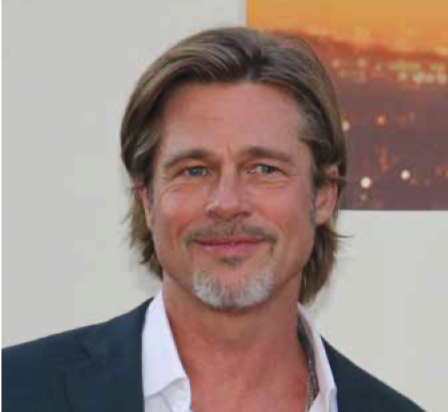
SHORT HIATUS AND BACK
For a man who had worked tirelessly since his breakthrough in 1994, with at least one movie release every year; an absence of three years from the silver screen is a highly unusual occurrence. Pitt’s absence from the movies between 2019 and 2022 may be down to a number of reasons.
The COVID-19 pandemic and its associated lockdowns is almost certainly one of the key drivers for Pitt stepping back from Hollywood. During this period, Pitt also reportedly sold 60% of his stake in Plan B to a French media conglomerate, while his messy divorce from Jolie certainly did not help matters. It was also reported that he had sought help for his drinking and smoking habits during this time.
However; his long-awaited return in 2022 showed what a leading talent and major box office draw he continues to be. Pitt re-emerged from his hiatus with a minor role in the 2022 Sandra Bullock-Channing Tatum action adventure hit The Lost City, with Bullock and Tatum returning the favour through guest appearances in Pitt’s US$235 million action-comedy smash Bullet Train in the same year: Pitt’s performance in the 2023 historical drama Babylon, set in the Golden Age of Hollywood, even earned him another Golden Globe nomination for Best Actor.
PERSONAL LIFE
As one of the biggest stars in Hollywood, Pitt’s personal life has often been a subject of intense media scrutiny, particularly his relationships and marriages. He has been married twice, and both unions had garnered immense media attention.
Pitt’s relationship with Juliette Lewis was his first wellknown romance. The two met in 1989 when they were cast together in the TV film Too Young to Die? and despite their age difference Pitt was 26 and Lewis was 16), the chemistry between them was palpable. Their relationship was marked by their shared love for music, as both were involved in the music scene. Pitt was known for his interest in rock music, while Lewis was a vocalist for her rock band, Juliette and the Licks.
However; despite their shared passion for music and acting, Pitt and Lewis faced challenges in their relationship. Their age difference and the demands of their burgeoning careers contributed to strains in their romance, and the couple announced their separation in 1993.
After his breakup with Lewis, Pitt’s next significant relationship was with Czech model and actress Jitka Pohlodek. Although Pitt and Pohlodek often made public appearances together, their relationship was brief, and was more of a subject of curiosity for both the media and the public. The level of attention did not reach that of some of Pitt’s other romances.
Brad Pitt s next relationship – with actress Gwyneth Paltrow – was arguably his first major high-profile romance. The two met on the set of Se7en in 1994 and quickly became romantically involved. Paltrow recalled that it was “major, major love at first sight”, adding that “it was crazy, As Pitt and Paltrow were both rising stars at the time, their relationship garnered considerable media attention. They made many public appearances together and became one of the most 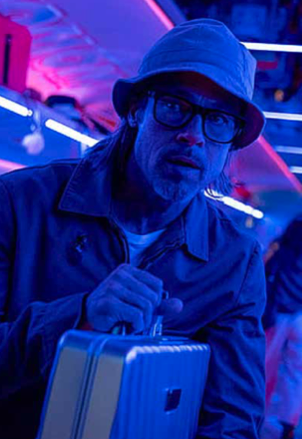 sought-after celebrity couples in Hollywood.
sought-after celebrity couples in Hollywood.
Ironicallv, it was the amount of scrutin and attention which caused their relationship to falter. The couple announced their separation in 1997, citing the pressures of their public lives and the challenges of maintaining a relationship in the spotlight.
Despite the end of their romantic involvement, Pitt and Paltrow have remained on good terms and have spoken positivelv about each other in interviews. They share a mutual respect and have expressed gratitude for the lessons they learned from their relationship.
But Pitt’s relationship with Paltrow was only a taster of what was to come. Pitt met Friends star Jennifer Aniston in 1998 and they quickly became Hollywood’s golden couple. After two years of courtship, they tied the knot in a lavish ceremony in Malibu, California, in July 2000 and their marriage was celebrated as a fairvtale union. Pitt and Aniston became the epitome of a Holvwood power couple.
During their years together, their careers continued to grow with Pitt solidifying his status as one of Hollywood’s leading men, while Aniston became one of the highest paid TV actresses. However, despite their successful careers, the couple faced intense media scrutiny and constant speculation about their relationship. In January 2005, they finally announced their separation, which was met with widespread disappointment from fans.
Pitt’s next relationship and marriage with superstar Angelina Jolie was arguably just as high profile as Pitt’s marriage to Aniston, if not more. “Brangelina” had met on the set of Mr. & Mrs. Smith in 2004 and they quickly became one of the most talked-about romances in Hollywood. Part of the media frenzy was arguably fueled by rumours that their relationship had sparked the end of Pitt’s marriage to Aniston.
The Hollywood golden couple made headlines not only for their acting careers, but also for their extensive philanthropic work. Their relationship was marked by the adoption of children from various parts of the world, induding Maddox, Pax and Zahara, as well as the birth of their biological children, Shiloh, Knox and Vivienne. The couple’s brood of six children became an integral part of their lives and public image, and their international adoptions drew attention to issues of adoption and child welfare. Pitt and Jolie also used their celebrity status to raise awareness about various humanitarian causes. Jolie’s work as a UNHCR Goodwill Ambassador and her efforts to promote human rights and refugee issues were well-documented, and Pitt often accompanied her on her trips. The couple also started the Jolie-Pitt Foundation, which aimed to assist with humanitarian crises around the world, and had made millions of dollars of donations to groups like Doctors Without Borders and Global Action for Children.
While the couple had started their relationship in 2004, it was only a full decade later in 2014 when they finally tied the knot in a private ceremony at their estate in France. Ironically, their marriage would not last long. In 2016, Jolie filed for divorce, citing irreconcilable differences. The divorce proceedings became protracted and often contentious, involving issues of child custody and the division of assets. It was a highly publicised and emotionally charged period, and the finalisation of the divorce in 2019 marked the end of a chapter in Pitt’s life.
PHILANTHROPY AND HUMANITARIAN EFFORTS
In addition to his successful acting career and high-profile relationships, Pitt is also well known for his extensive philanthropic work. He has been involved in various humanitarian efforts and charity projects over the years, besides his work with the Jolie-Pitt Foundation.
One of his most notable endeavors is his support for the Make It Right Foundation, which he co-founded in 2007. The organisation aimed to rebuild and provide sustainable housing for victims of Hurricane Katrina in New Orleans. The foundation’s work extended to other parts of the US, including Newark, New Jersey, and Kansas City, Missouri.
Pitt has also been actively involved in addressing global issues such as poverty, healthcare and children’s rights. He has worked with organisations like the ONE Campaign, which aims to fight extreme poverty and preventable diseases. And along with George Clooney, Matt Damon, Don Cheadle and Jerry Weintraub, Pitt is one of the founders of Not On Our Watch, an organisation that tries to focus global attention and resources to stop and prevent genocide.
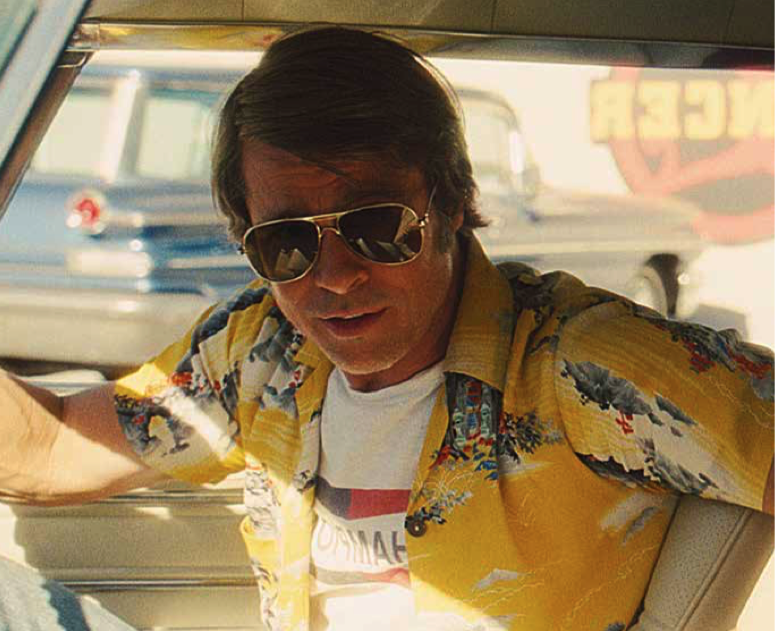
STILL HOLLYWOOD’S INCREDIBLE HUNK
If Pitt’s brief hiatus between 2019 and 2022 had caused some alarm, his interview with GQ in 2022 further prompted fears of a potential retirement when he mentioned that he was in the ‘last semester” of his career: However; the man himself had quickly stepped forward to squash the rumours, proclaiming: “I’m not getting out by any means!”
PRIME



